Catfish tarakatum: description, content, reproduction and compatibility
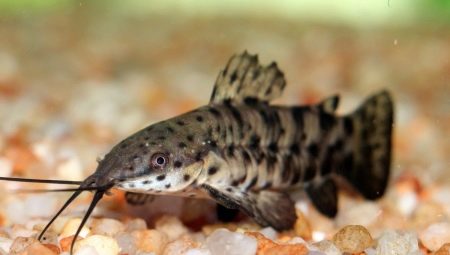
Catfish tarakatum is an aquarium fish with a cheerful and cheerful disposition. The behavior of these inhabitants of artificial reservoirs does not at all correspond to our ideas about the nature of bottom fish. These pets do not spend all their time at the bottom, do not bury themselves in the ground and do not hide behind snags. On the contrary, they really like to swim in the upper layers of the water column and pick up food from the surface.
Description
In appearance, the tarakatum catfish are rather inconspicuous, but their unusual behavior attracts attention to them and distinguishes them from brightly colored fish. Tarakatums are distinguished by their activity and mobility, they literally radiate cheerfulness and this often gives rise to the feeling that the fish are in a great mood all the time.
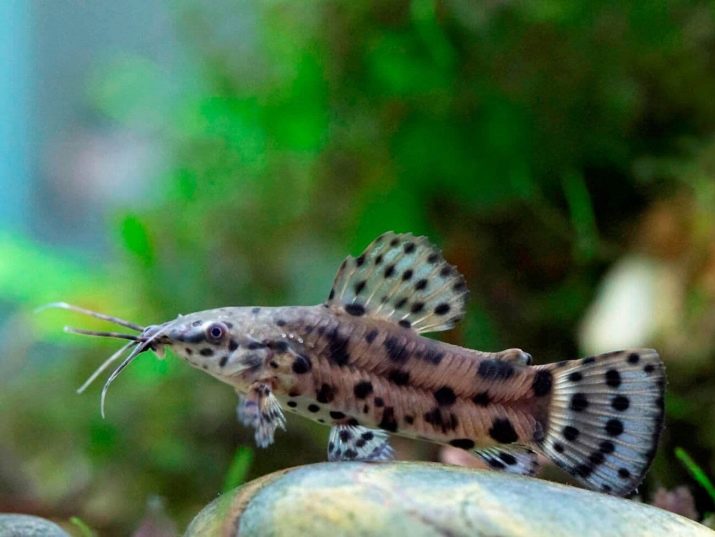
Tarakatums belong to the Armor catfish family, in their natural environment they live in small fast rivers of South America, but they can often be found in bodies of stagnant water, including on islands.
Since this species of fish has a wide habitat, there are a lot of ecotypes, nevertheless, all representatives of tarakatums have common features.
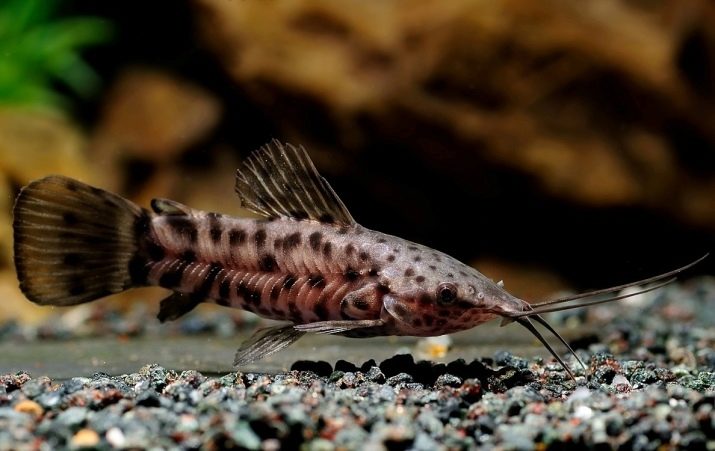
The body is elongated and slightly flattened; this is most noticeable in the abdominal region. Bone plates are located on the sides, the head is powerful, the muzzle is pointed. There are two pairs of mustaches near the mouth opening: one pair from below - the catfish use it to probe the bottom, and the second is directed upward and slightly to the sides - they are necessary for the catfish in order to feel the direction of the current and the emerging obstacles on the way.
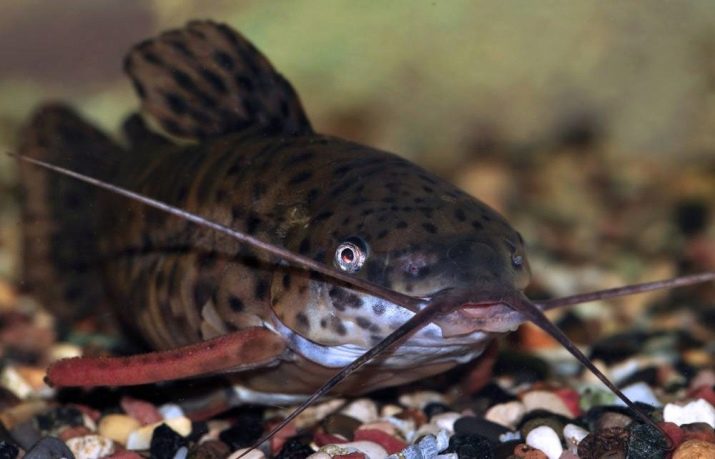
The color depends on the subspecies - tarakatums can be painted in different shades from light beige to dark brown. Small spots are visible on the head, trunk and in the region of the fins; they usually appear in adolescence and remain until the end of life. The abdomen is colored beige or light cream. Rarely, but there are albino cockroaches.
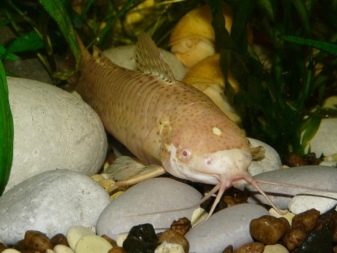
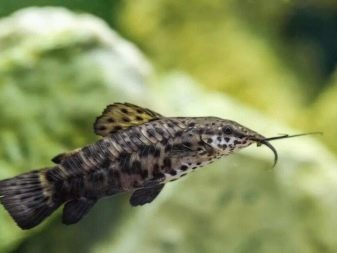
The average length of catfish is 10-14 cm, but sometimes especially large individuals come across - their size reaches 18 cm. In nature, cockatums live for 5-6 years, but if a favorable habitat is created in an aquarium, their life expectancy can reach 10 years.
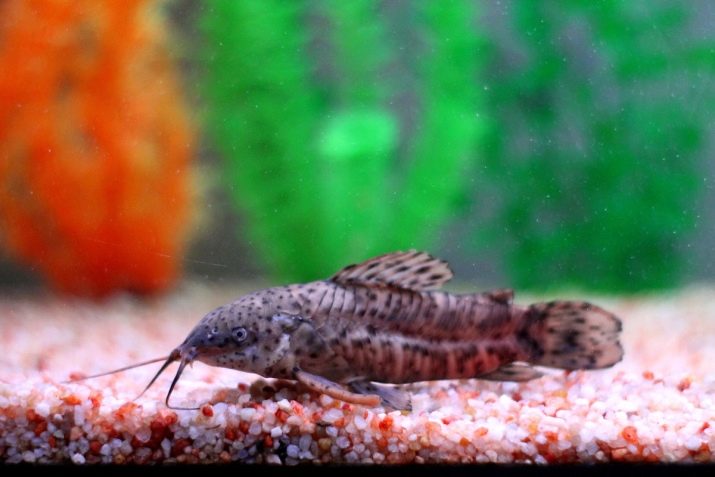
Sex differences
Distinguish the female from the male pretty easy:
- females are much larger than males;
- in females, the fins are rounded, and in males, they are shaped like a triangle;
- the ray of the pectoral fin in males is rather sharp and slightly thickened, at the time of sexual activity it becomes yellowish-orange;
- during the spawning period, the abdomen of the male individual changes its light shade to violet-blue;
- the female does not change color during the spawning period, although the abdomen becomes fuller.
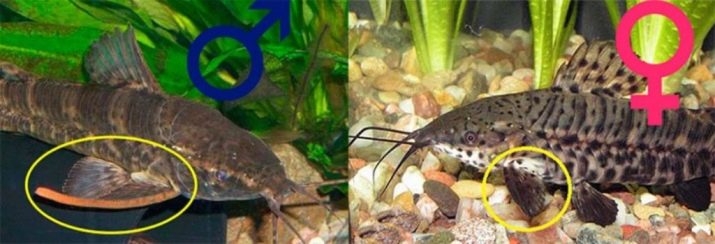
Maintenance and care
Keeping and caring for cockatums is not difficult for aquarists, the most important condition is to acquire several individuals at once. These catfish are schooling fish, in nature they exist in groups of 500-1000 units, therefore, when kept alone, they will experience severe stress.
Tarakatums love space, they need a large aquarium, while the bottom area should be large. Additionally, you should purchase all kinds of shelters for catfish: shards, turrets, houses or grottoes.
Each week, the water must be changed by a third of the total. If the liquid is heavily contaminated, you can replace half of the water.
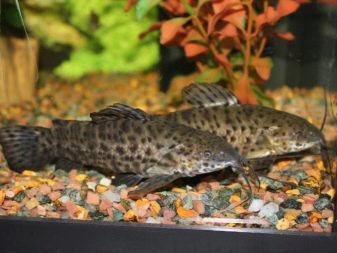
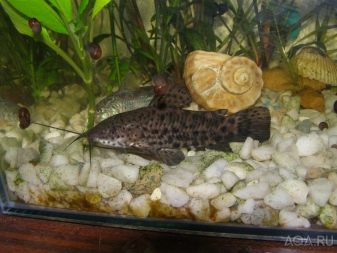
In nature, tarakatums live in hot climates, therefore, the microenvironment in an artificial reservoir should be appropriate. Suitable conditions for keeping fish:
- water temperature - 25-27 degrees;
- acidity - 5.7-7.5 pH;
- hardness - 20-25 units.
It is imperative to plant plants in the aquarium to the catfish - they scatter the light and create the darkening necessary for the cockatums. It is best to use duckweed and riccia, which will partially cover the surface of the reservoir.
However, do not forget to ensure that pets have access to the surface of the water.
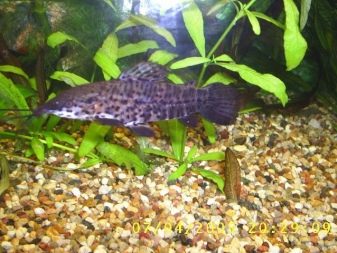

When choosing a substrate, it is better to give preference to smooth and necessarily coarse soil, although sand will also work. Small river pebbles should not be used, since catfish will certainly raise the dregs and thereby pollute the reservoir.
It is very important to organize high-quality filtration in the aquarium. In their natural environment, these fish live in rivers with a noticeable current, therefore, the filter must be powerful in order not only to purify water, but also to create water flows.
Despite the fact that cockroaches have the ability to breathe air, nevertheless, aeration is important for catfish, so a compressor must be placed in the aquarium.

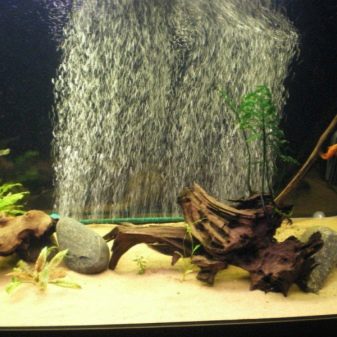
Fish do not like bright light, so you should not put the tank near a window or near another light source. Aquarium lamps are also not needed - twilight and faded light are suitable for these fish, in addition, darkened shelters must certainly be present in the container.
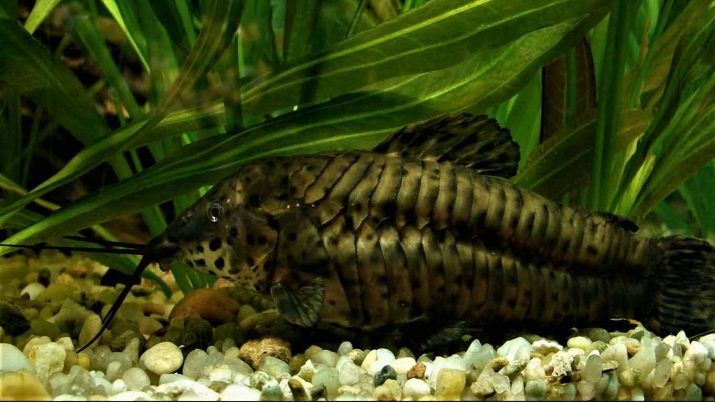
Feeding
Tarakatums, like any other large fish, need a large amount of food and a very varied diet. Both live and dry food are suitable for catfish.
Dry food in the form of flakes, tablets or granules - it can be bought in any store, the product is enriched with all vitamins and additives necessary for fish. Usually, graduated feeds include several lines - for fry, for adults, for sick pets. Also, manufacturers produce products to improve coloring and other types of feed.
From live products, tarakatums really like bloodworms, brine shrimp, chopped worms, as well as minced seafood, for example, shrimp.

The diet must include plant components - lettuce and dandelion greens. Catfish need to be fed a couple of times a day, preferably in the dark, then your pet will always be cheerful, cheerful and well-fed.
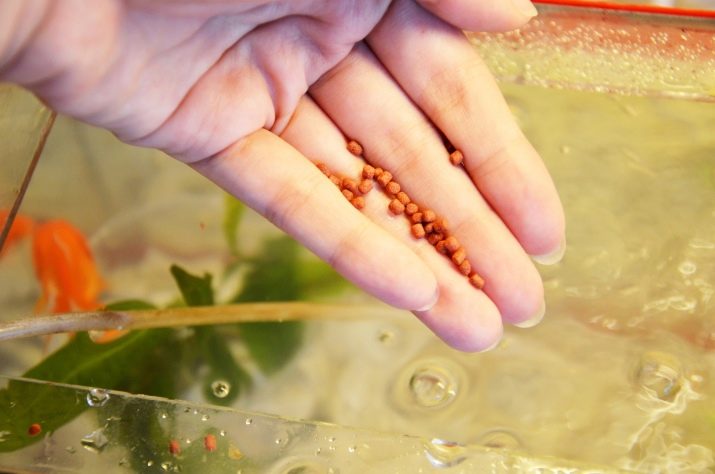
Compatibility
Catfish tarakatum are predominantly nocturnal. During daylight hours they are passive and almost inactive. This fish does not show much interest in the rest of the inhabitants of the artificial reservoir, unless they invade the bottom territory. Thanks to these qualities, catfish can get along with any neighbors, with the exception of too active and aggressive ones. Best of all, tarakatums get along with the following types:
- zebrafish;
- tetras;
- by rasbora;
- goldfish;
- scalars.
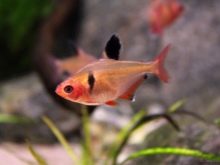

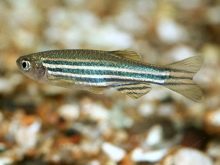
When choosing neighbors, it is advisable to be guided by the following criteria:
- body length is more than 6-7 cm, otherwise the catfish will start chasing the fish and may even eat them;
- fish should swim mainly at an average level in the water column;
- give up bottom fish - the abundance of pets at the bottom will stress the taracatum due to lack of space;
- Do not breed catfish with territorial fish such as bots and cichlids.
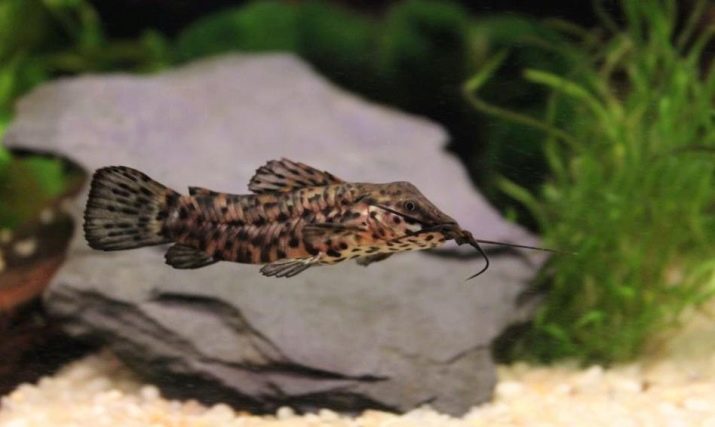
Breeding
Breeding tarakatums is quite simple. Tarakatums reach sexual maturity by 8-15 months, the reproduction of these catfish at home does not present any difficulties - the fish form pairs on their own.
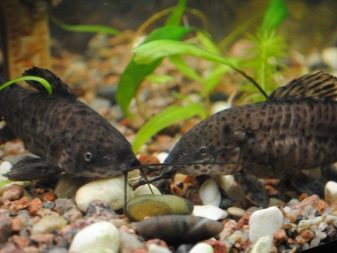

In order to stimulate spawning, it is necessary to lower the water temperature by 4-5 degrees, and during this period to intensively feed the future parents with food of animal origin. There should be so much food that the catfish bump into it at the slightest movement.
If possible, place an inverted saucer on the bottom - the male will arrange a nest there, after which the female will begin to spawn (up to 1000 eggs). Incubation lasts 4-5 days, the hatched young are fed with brine shrimp, daphnia or live dust. When the fry begin to swim on their own, they can be moved to a shared aquarium.
How to keep and breed tarakatum catfish, see the video below.








